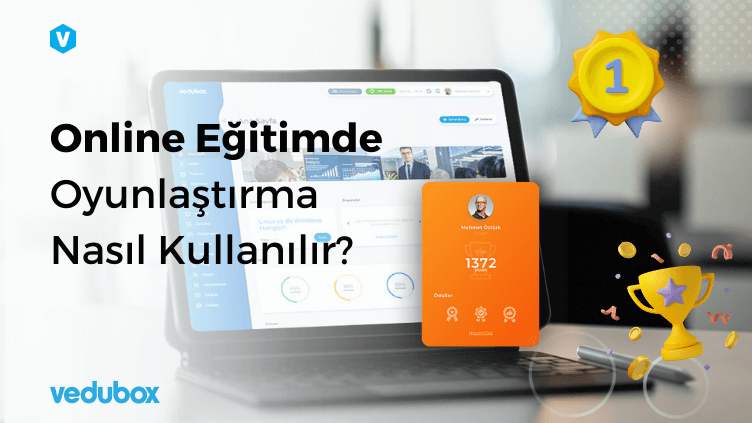The increasing digitalization of the world and developing educational technologies bring different education methods and models to the agenda. Perhaps one of the concepts we have heard the most in the last two years is the hybrid education system.
So, what is the hybrid education system? How is it applied? What is the place of the hybrid model in the future of formal education? In this article, we will try to answer such questions about the hybrid system.
What is Hybrid Education?
The word hybrid means formed by combining different elements. Although it is a relatively new term and does not have a precise definition, we can say that hybrid education is a pedagogical approach that combines the strengths of face-to-face and distance education models.
It is also useful to mention the “blended learning” system, which is used alternately with hybrid education. Although they are thought to be synonymous, blended learning and hybrid learning are different from each other. In the blended education system, lessons are mostly taught face-to-face, but technological opportunities are used for reinforcing and auxiliary contents, assessment-evaluation activities (a 25/75 ratio can be considered).
The hybrid education system includes more technological opportunities, face-to-face, and online education elements can be used in a more balanced and flexible way (closer to a 50/50 ratio). Many studies have been conducted on the positive effects and benefits of hybrid education on learning outcomes and academic achievements, which have been applied in various ways for more than ten years.
How is the Hybrid Education System Applied?
Hybrid education can be implemented in different ways according to the level and needs of students and the goals of the educators who design the lessons. During the pandemic period, almost all formal education institutions around the world discovered and tried different hybrid education practices. According to a study conducted with 872 administrators and 1042 educators in the 2020-2021 academic year, the use of the purely face-to-face education model was only 34%, while hybrid and distance education models were widely preferred.
In this process, where face-to-face and online education are carried out together, four hybrid education models have become prominent:
Rotation Model
In the rotation model, the syllabus is divided between face-to-face and online learning processes, “stations”. For example, a certain part of the lesson hours can be divided into face-to-face, online, group work or homework, or one-to-one meeting with the teacher.
An alternative practice has become popular recently, “flipped classroom”, in which students learn the course content by themselves at home (supported by online materials, videos, readings), and in the classroom environment, the homework/practice part is accomplished. Although rotations are usually carried out under the guidance of a teacher and adhering to certain structures, the choice can be left entirely to the students according to different age groups and levels.
Flexible Model
The flexible hybrid education model, as its name suggests, is an order in which students complete the modules they want in the time they wish. Most of the educational materials are provided in digital form, for example; videos, presentations, documentaries, quizzes, live broadcasts. This model, which can be practiced in computer laboratories or collaborative studying areas at school, allows students to be in a common learning environment and to learn at a pace and structure that suits them.
Meanwhile, teachers can support the students with one-to-one teaching according to their needs. The flexible model is especially useful for students who have difficulty keeping up with the pace of the class in the traditional learning model.
Elective (A La Carte) Model
The elective model consists of courses that students can take completely online in addition to the courses they are currently taking face-to-face. The fact that these courses can be offered in or out of school gives students flexibility in time and place. Especially in cases where some elective or advanced courses cannot be provided at school, students prefer this method.
Enriched Virtual Model
The enriched virtual model can be considered as an alternative to the fully online learning model in which face-to-face elements are reinforced. In this model, while the vast majority of courses are taken online, relatively little (for example, twice a week) participation in face-to-face learning is required.
What Kind of Infrastructure Is Required for Hybrid Education?
The secret of a smooth hybrid education experience is the learning technologies that can be easily used by educators and students and meet different needs. Although their importance is undeniable, rather than technological equipment such as cameras, microphones, projectors, and computers, it is necessary to emphasize software that facilitates the e-learning experience as much as possible.
When mentioning e-learning, the first thing that needs to be considered is LMS (Learning Management System) platforms, which have become popular recently. These platforms allow you to control the management, documentation, monitoring, reporting and delivery of educational content and learning programs from one place.
More concretely, LMS are the platforms where teachers can upload course content, presentations, videos, assignments, even give live lectures, make assessment and evaluation practices and share results, and students can easily access these contents.
It is possible to obtain all these features and more from a single provider with completely cloud technology, no installation required, unlimited capacity, and no server and technical personnel costs. Meet Vedubox!
Using Microsoft and Google technologies, Vedubox has every feature you need in hybrid education, from live lectures to meetings, from content management to exam system. Vedubox, which has provided online education infrastructure to many educational institutions, K12 and universities without the costs of servers, technical personnel and infrastructure, can also be accessed from tablets and mobile devices.








